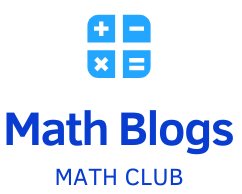A lot of math projects demand careful planning as well as collection and analysis of data, but with the right tools, this procedure can be made easier and more fun. Whether it is a school project, research or professional tasks, there are numerous software and tools available to help streamline your math projects. These tools are great for calculation, graphing as well as collaboration and data visualization making your math projects better organized and efficient . Here we will look at some essential tools that can take your mathematics projects to another level.
MATLAB: Powerful Mathematical Computing
MATLAB is a go-to tool for professionals, researchers, and students working on complex math projects. It offers many mathematical functions such as numerical computation , matrix manipulation ,and data analysis among others. Specifically, MATLAB has proved very helpful in mathematical modelling , optimization problems,and simulations among other subjects. With its internal functions and capacity to manage large datasets,MATLAB can assist you in promptly solving problems, analyzing results,and visualizing information.
GeoGebra: The Interactive Mathematics Platform
In the hands of a teacher, GeoGebra is an amazing tool for making interactive geometry, algebra and calculus projects. It has a dynamic user interface that helps learners visualize math concepts and manipulate equations and graphs in real time. This platform is best suited for tasks involving trigonometry, calculus or geometry which need fast trial and error as well as manipulation of shapes and functions. Since it is free and easily accessible, this resource is indispensable to all students or tutors who are involved in mathematical projects.
Excel: A Must-Have for Data Organization and Analysis
Perhaps the most adaptable tool used to organize data with analytical purposes remains Microsoft Excel. Statistics-oriented mathematics projects often demand use of excel because they involve creation of charts or working with huge datasets. Calculations are made easy by using its built-in functions and formulas while it can also present data on a graph. Whether you are collecting data, doing simple arithmetic or even creating complex reports, Excel will help you keep all elements of your maths project together so that you do not lose focus on what matters most.
Desmos: Interactive Graphing Tool
The Desmos is a favorite graphing calculator that simplifies the visualization of functions, equations, and inequalities. It is an excellent tool for math projects involving graphing or exploring mathematical relationships. Desmos let you make real time graphs with parameters that can be adjusted leading to dynamic changes. Whether you are doing algebra, calculus or statistics, Desmos gives a simple way of understanding complicated mathematical explanations through its user interface.
Wolfram Alpha: Computational Knowledge Engine
The Wolfram Alpha is strong computational resource that offers solutions to different types of mathematical problems. From basic arithmetic to advanced calculus, Wolfram Alpha provides step-by-step solutions and detailed explanations. This tool comes in handy when working on project which requires solving equations, data analysis and statistical calculations. In addition, it’s great for checking your work or looking at other ways of solving problems so that if one cannot get what one wants from it then they are missing out on an opportunity for success in their own math project levels since such tools like this one should be part of every serious mathematics student’.
SR: Statistical Computing and Data Analysis
R is an open-source software which is freely available for statistical analysis and data visualization projects. It contains a wide array of statistical tools that make it the best fit for handling intricate datasets and conducting exhaustive in-depth studies. This makes R ideal for projects involving hypothesis testing, regression analysis or probability theory. Because it has many packages and functions, users can create custom analyses and detailed reports.
Google Sheets: Cloud-Based Data Management
Google Sheets is an online version of excel that can be used to organize and analyze data in a similar manner as Excel does. Therefore, Google sheets may be a better option when working on group assignments or even collaborative math classes. The good thing about Google sheets is that more than one user will be viewed at one time thus sharing the progress and updating each other on what is happening at that particular time. As such, Google sheets are integrated into Google’s cloud-based suite of tools that allow people to store data on them hence making them suitable for both personal use as well as collaborative work on different projects.
TINKERCAD: Math Projects’ 3D Modeler.
Specifically, Tinkercad is a platform through which one can create 3D models, and this makes it especially useful for mathematical projects aimed at studying geometry, spatial reasoning or design. This simle to use interface will allow you create modify or even b please note that the tool allows creating new 3D shapes while changing those already obtained. If you are to mention a perfect tool helping in visualizing geometric concepts, exploring variations or building 3D printable models it would be no other than Tinkercad. Whether such students are designing geometric structures or parsing shapes into elements, they can acquire solid understanding about the complex topics of mathematics via Tinkercad’s hands on approach.
PYTHON: Math Projects’ Turing
Python is an adaptable programming language suitable for numerous math-related tasks. Those who work on data analysis requirements as well as simulations and those who want to develop custom algorithms will find Python very helpful. Also, Python has got an extensive library with many math and scientific functions that include NumPy, SciPy and Matplotlib libraries among others. When manipulating data sets, conducting calculations or presenting results visually Python offers various options. It is recommended for automating repetitive math tasks in projects involving detailed statistical analyses or other platforms/tools integration.
Tableau: A Visualization Tool for Data
Tableau is an influential data visualization tool that helps present findings in mathematics in a manner that is understandable and appealingly visual. Whether you are dealing with statistical data, model results or trends, Tableau has the ability to help you create interactive dashboards and charts which simplifies complex data. It’s useful especially when working on math projects that involve ample datasets or you want to show your findings to others. You can easily create customized visualizations even if you do not have any programming knowledge via the drag-and-drop feature of Tableau.
Conclusion
Depending on whether you are a learner, researcher or professional, having the right tools can go a long way in making your math projects easier. The above-listed tools offer key functionalities such as calculation and analysis, data visualization and 3D modeling necessary for more efficient projects. To enhance problem-solving skills better collaboration and clearer presentations, involve these tools into your workflow. You can choose from various alternatives taking into account such factors as project specifications in mathematics so that routine becomes more structured and amusing.




